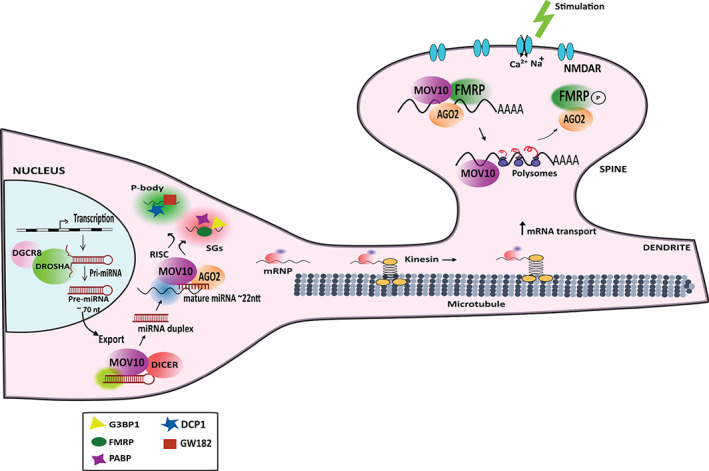FIGURE 4.

Role of MOV10 in miRISC pathway and translation regulation in neurons: General biogenesis of miRNA for miRNA‐mediated regulation of target mRNAs. miRNAs are transcribed from the genome after which they are processed through the DROSHA microprocessor complex. After being exported to the cytoplasm, the pre‐miRNA is further processed to remove the hairpin loop structure and yield a double‐stranded miRNA. The miRNA strand gets cleaved, and one strand is loaded onto AGO to form the RISC. RISC‐bound mRNAs are either translationally suppressed by decay or by inhibition. Both the processes involve MOV10 (O'Carroll & Schaefer, 2013). RISC‐bound mRNAs can be transported to RNA condensates like SGs or PBs (Riggs et al., 2020). MOV10 associates with proteins associated with both SGs (G3BP1, FMRP and PABP) and PBs (DCP1 and GW182). In the neurons, mRNAs are stabilized to form mRNPs which are transported along microtubules to the dendritic regions (Zeitelhofer et al., 2008). Here, MOV10 associates with AGO2 and FMRP to regulate mRNA translation. Upon NMDAR stimulation, FMRP is phosphorylated which dissociates AGO2 from the mRNAs to allow local translation (Kenny et al., 2020, 2019). AGO2, Argonaute 2; FMRP, Fragile X mental retardation protein; PBs, processing bodies; RISC, RNA‐induced silencing complex; SGs, stress granules
